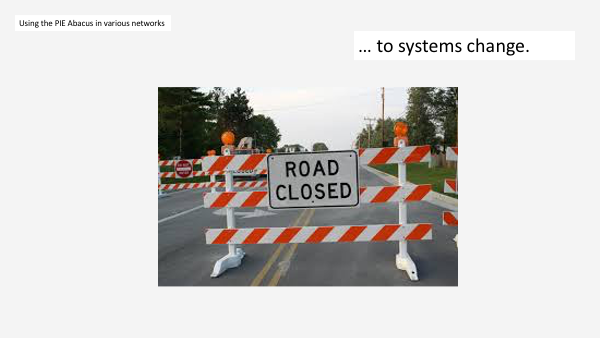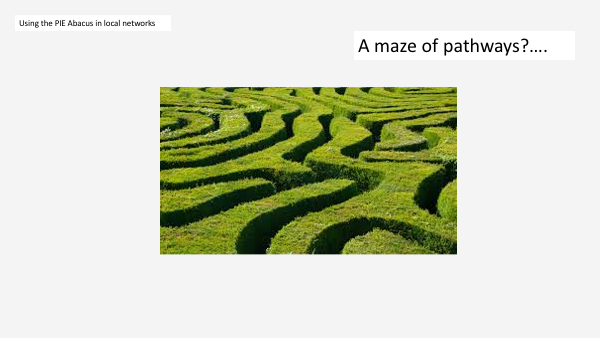It is a huge exaggeration, but pardonable under the circumstances, to say that we do now know, pretty much, how to improve services – on the inside. But the problems so many services are now struggling with are as much external as internal.
Inappropriate requirements built into service specifications and contracts; gaps and lack of ‘join’ in the pathways between services; procedures that work more as barriers than entrances: clumsy and formulaic contractual ‘outcome measures’, and other such systemic failures; these are the issues we must tackle now.

The PIEs 2.0 framework therefore deliberately included these areas, seeing them as some of the ‘spaces of opportunity’ that the most effective services actually WERE trying to address.
The Pizazz, in asking about helping and hindering factors, therefore included planning actions to address them. But it was only when we began to think through how the PIE Abacus could take the whole thing ‘up a gear’ that the full potential – and the potential radicalism – in this software began to emerge : HERE
The PIE Abacus now offers commissioners a more effective to encourage PIEs than simply writing it into their contracts – which tends instead to produce lip service. But still, it will need more than local lobbying to change commissioning practice.

However, we are seeing a growing number of voices questioning and challenging the dominant paradigm of ‘the New Public Management’, the ‘purchaser/provider split’ – and finding practical expressions of the need to find a better way.
From Lankelly Chase, arguing for ‘Thinking Like a System’ and tackling the “Hard Edges’; to new groupings such as the New Systems Alliance, Enabling Help, Human Learning Systems, we are seeing attempts to re-think, on a theoretical as well as a practical level.
With the proposed PIElink ‘advisory’ or ‘editorial’ group, we hope to see a fairly representative sample of committed, pro-active practitioners in services on the ground, which we hope can become another collective voice adding to these calls for system change : HERE
Combined with the data that the PIE Abacus can provide, and the potential for income from the Abacus channeled through the re-investment vehicle, PIRAN, we may then also play a part not just in promoting and informing creative practice, but in actually helping to fund it : HERE